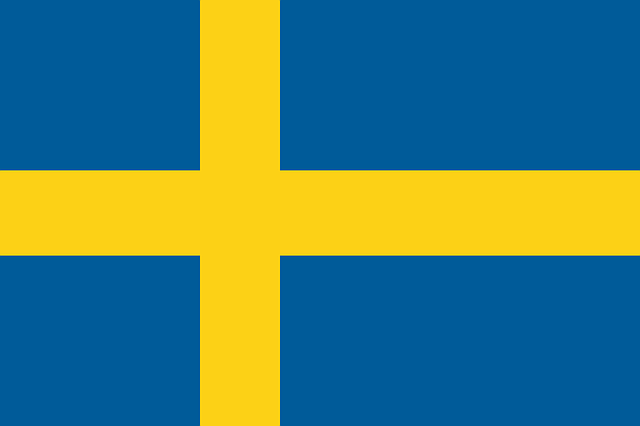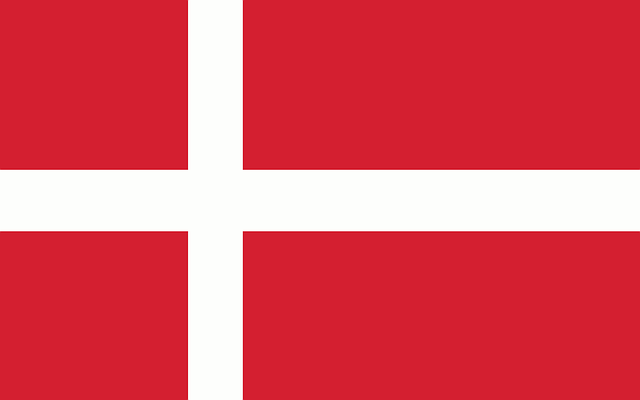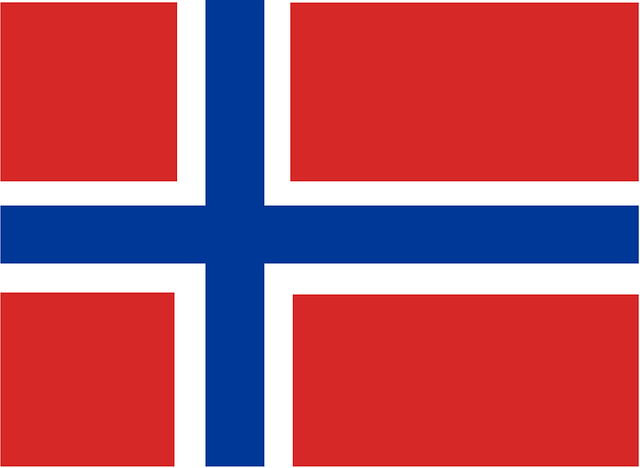Scandinavian names explained
The Scandinavian countries Sweden, Norway, and Denmark are the siblings of the North and share a large part of their history and culture. They even share a long list of legendary names—I mean, we have all heard the epic Viking names Loki, Thor, and Odin, right?
Scandinavia is a treasure of historical, beautiful, and mythically sounding names. Authors such as J. R. R. Tolkien used the Scandinavian treasure trove of names when he looked for name inspiration for his characters in Lord of the Rings.
In this article, we are going to dive deep into the mystical world of Scandinavian names and explore its centuries of unique and interesting first and last names.
Names in the Viking Era
The Vikings, who were active approximately a thousand years ago, traveled by sea across Europe, going as far as Northern Africa, North America, and even Baghdad. They left behind them a trail of evidence of religion and culture that have given great insights into the lives and manners of the Vikings.
In the Viking Age, names and nicknames were generally inspired by Norse gods and mythological animals. The Vikings also used bynames, which, for example, could indicate kinship or origin. Names like Harald Bluetooth or Ivar the Boneless were thus common among the Vikings.
When Christianity entered the Nordic regions in the late Viking period, biblical names quickly gained popularity, and many of the traditional Viking names were eventually abandoned. Viking names are specific to Scandinavia—and some of them are still used in Scandinavia today.
Male Viking names
- Frode : the name Frode comes from the Old Norse word “fróðr” which means “wise” and “clever”. A variant of this name (Frodo), appears as the name of the main character of the trilogy The lord of the Rings.
- Rune : the name Rune comes from the Old Norse word “rún” which means “secret”. Rune is a common Scandinavian name.
- Thor/Tor : Thor is a name which is related to Norse mythology, where it is the name of the God of thunder and lightning.
- Torsten : the name Torsten comes from Old Norse. Etymologically, this Scandinavian name is formed as the combination of Thor (the name of a God in Norse mythology), with the Norse word “steinn” (which means “stone”).
- Ulf : the name Ulf come from the Old Norse word “ulfr” which means wolf.
- Sigmund : etymologically, the name Sigmund may have arisen as the combination of the Old Norse word “sigr” (which means victory), with the word “mund” (which means “hand”).
- Ingemar : the name Ingemar is formed as the compound of two words: “Ing” (the name of a Norse god), combined with the Old Norse word “mærr” (which means “famous”).
- Alex : defender
- Arne : eagle
- Birger : keeper
- Bjorn : bear
- Einar : bold, valor
- Eir : mercy
- Erik : resolute ruler
- Harald : lord and ruler
- Ivar : archer
- Jarl : nobleman or warrior
- Knud : knot
- Leif : descendant
- Loke : flame or tangler
- Magnus : great
- Odin : raging or frenzied
- Ragnar : counsel
- Roar : fame and spear
- Sten : stone
- Sune : son
- Toke : Thor and helmet
- Vidar : warrior
Female Viking names
- Astrid : the name Astrid is formed as the compound of two words: The Old Norse word “áss” which means “a god”, and the Old Norse word “friðr” which means “beautiful” and “lovable”.
- Ingrid : the name Ingrid comes from the Old Norse name “Ingfríðr”. The etymology of that name is the combination of two words: “Ing” (the name of a Norse god) and the Old Norse word “friðr” which means “beautiful”.
- Idun : this name comes from “Iðunn” which is the name of a goddess in Norse mythology who is associated with youth and the spring season. The name Idun is often taken to mean ‘unending youth’.
- Randi : the name Randi comes from the Old Norse name “Ragnfríðr”. Like many female Old Norse names it ends with the word “friðr” which means “beautiful” and “lovable”.
- Bodil : penance and fight
- Edda : blessing, wealth
- Eira : healing
- Freja : lady
- Frida : peace
- Gertrud : spear
- Gunhild : fight
- Hilda : the fighter
- Liv : of life
- Saga : soothsayer
- Signe : the victorious one
- Revna : raven
- Tora : of the god Thor
- Tove : dove
- Yrsa : wild or bear
Scandinavian first names throughout history
Swedish, Danish, and Norwegian first names originate from the Germanic branch of the Indoeuropean language tree. Among Scandinavian languages, Swedish and Norwegian are the most similar. Swedish and Danish are also quite similar.
Up until the 18th century, first names in Scandinavia were mostly uniform and similar to Germanic names. First names such as Adolf, Albert, Filip, Augusta, Fredrika, and Vilhelmina are all Germanic names.
In the 18th and 19th centuries, influence from mighty countries such as France begun to leave an imprint in the Scandinavian repertoire of names. First names such as Antoinette, Henriette, Louise, and Emil were all inspired by French names.
During the same period, English names also became more popular in Scandinavia. Names like Annie, Fanny, Harriet, Jenny, Mary, Harry, Tommy, and William became big favorites, and several of them are still widely used today.
Today, choosing a name comes with endless possibilities. Through a single click, parents have access to a plethora of lists of popular, eccentric, unique, or historical names.
In the past decades, due to both the existence of the internet and globalization, first names have become incredibly diverse, with parents taking inspiration from all corners of the world.
The first name system in Scandinavia
It’s common in Denmark, Norway, and Sweden to have more than one given name. In Denmark and Norway, many people have two given names, such as Emil Alexander.
Being a Swede comes with even more possibilities because you can have as many first names as you want! In Sweden, it’s common to have three or even four first names (although only one of them is used in daily life).
Many Swedes have three given names, such as the authors Karl Artur Vilhelm Moberg and Astrid Anna Emilia Lindgren.
 Popular first names in Sweden
Popular first names in Sweden
First names tend to disappear and then reemerge later. When it comes to Scandinavian names, this has proven to be true. Many of the names that were popular one or two hundred years ago have made a comeback in modern times.
Some popular names for girls in the 19th and 20th centuries were Agnes, Alexandra, Alice, Alva, Astrid, Charlotte, Emilia, Emma, Elisabeth, Eva, Frida, Hanna, Ida, Ingrid, Johanna, Louise, Lovisa, and Sara for girls, and Abraham, Adam, Alexander, August, Axel, Conrad, Elias, Erik, Filip, Henrik, Hugo, Johan, Karl, Oscar, and William.
In Sweden, many of the names that were common over 300 years ago are still common today—some of them have even made it into the top ten. Here are the top fifteen names in Sweden for both genders in 2020:
 Popular first names in Denmark
Popular first names in Denmark
Many of the top first names are shared by all Scandinavian countries, even though the countries spell or pronounce them differently.
Some of the most popular first names for girls in the 19th and 20th centuries were Agnes, Alberte, Dagmar, Frida, Grethe, Hanne, Laerke, Maja, Sofia, Signe, Lise, and Sigrid, and Anker, Albert, Alfred, Aske, Bertil, Christian, Elias, Emil, Frederik, Henrik, Harald, Jens, Johan, Karl, Knud, Mads, Peter, Tage, and Valdemar.
And here is the most common first names in Denmark 2020 for girls and boys:
 Popular first names in Norway
Popular first names in Norway
To nobody’s surprise, Norway has several top names in common with Sweden and Denmark. However, Norway still has some unique surprises.
Some of the most popular first names for girls in the 19th and 20th centuries were Anna, Anne, Astrid, Else, Gerd, Margit, Marie, Marta, Karen, Ingeborg, Inga, Ingrid, Jenny, Johanne, Karoline, Kristine, Olga, and Ruth, and Anders, Arne, Einar, Hans, Harald, Johan, Johannes, Karl, Kristian, Lars, Martin, Nils, Odd, Olaf, Ole, Peder, and Sverre.
And today, these are the top fifteen first names for girls and boys in Norway:
Scandinavian patronymic surnames
For a very long time, Scandinavians used patronymic surnames. A patronymic surname is created by attaching a suffix to the father’s first name.
For example, if the Swedish Johan Andersson had a son named Karl, Karl’s surname would be Johansson (because he’s Johan’s son).
This way, patronymic surnames changed with each generation and were not passed down.
It was only in the 19th century, after the Scandinavian countries had passed several naming acts, that Danish, Norwegian, and Swedish families begun to take patronymic surnames as their heritable family name, which resulted in an overwhelming dominance of a few surnames.
Because of the naming acts and the overwhelming popularity of a handful of names, surnames in Scandinavia often end in suffixes. The suffixes -son, -sson, and -dotter is incredibly common in Sweden while surnames ending in -sen and -ssen, -sson, -sdatter in are the most common surnames in Denmark and Norway, respectively.
Non-patronymic surnames
Surnames were not always patronymic. Some surnames were derived based on occupation, a unique characteristic, or a location.
Adopting non-patronymic surnames was common in Denmark and Norway but not in Sweden. For example, the Danish surname Møller is the most common non-patronymic surname in Denmark and refers to the occupation as a miller.
The surname Schmidt, derived from German, is also common in Denmark and is an occupational surname for blacksmith or metal worker.
Around the same time as the naming acts passed, Scandinavians (and particularly Swedes) started to adopt an additional surname to distinguish themselves from others with the same name.
These names were commonly inspired by nature—called nature names in Sweden—and were often made up of two natural elements. The surname Lindgren, for example, is derived from “lind”, meaning “linden”, and “berg”, meaning “mountain”.
Nature surnames are, however, not always composed of two natural features. For example, “Dahl” is a very common Swedish surname that simply means “valley”.
Even though there are plenty of variations of nature names, patronymic surnames remain the most common surnames in Scandinavia today. Just look at the most common surnames in Sweden, Norway, and Denmark:
Scandinavian surnames and marriage
In Scandinavia, it’s always been a tradition for women to adopt the husband’s surname. This is still usually the case: when a man and woman marry, the woman usually adopts the husband’s surname.
However, due to changing social customs and the progression of women’s rights, more and more women choose to keep their own surname when marrying their partner. Some couples also choose to combine their surnames to a double surname, instead of choosing one surname over the other.
In Sweden, where the naming laws are more lenient than in Denmark and Norway, it has also become popular to create completely new surnames. Swedish naming laws state that its citizens can create new surnames if they are not already in use or offensive.
Surnames such as Drömskog (dream forest), Fridvinge (peace wing), and Guldhjelm (golden helmet) are, according to many Swedes, much more fun than the boring and common patronymic surnames ending in -son—or what the Swedes call “Svensson names”.
Scandinavian noble names
Denmark, Sweden, and Norway have long been constitutional monarchies, and there are many noble families with unique and protected surnames. The Scandinavian nobility was a legally and socially privileged social class whose main function was to serve the royal families.
Nowadays, noble classes no longer enjoy privileges such as tax exemption, and they are by law not above any other family. However, a minority of nobles still belong to the elite and have elevated societal positions because of their heritage. This is more common in Denmark than in Sweden and Norway since Danish nobility has a recognized status in Denmark (but they still don’t have any real privileges).
Some of the noble names have been derived from nature or occupational surnames while others are based on location or eminent figures within the family. Noble names are sometimes also derived from words related to armor and weapons, such as “sword” or “shield”.
For example, Danish noble names such as Beck (stream), Berger (mountain), and Rosenkrantz (wreath of roses), and the Swedish noble names Leijonhufvud (lion head), Stenbock (stone goat), and Ekeblad (oak leaf) are all derived from nature.
Here is a list of some noble names and their meaning:
Denmark
- Bille (beetle)
- Blome (flower)
- Engberg (meadow mountain)
- Falkenskiold (falcon shield)
- Fisker (fisherman)
- Fredberg (peace mountain)
- Güldencrone (golden crown)
- Gyldenfelt (golden field)
- Lykke (happiness)
- Oxe (ox)
- Rosenkrantz (wreath of roses)
- Rosenvinge (rose wing)
- Vind (wind)
- Winterfeldt (winter field)
Norway
- Anker (anchor)
- von Arnold (of Arnold)
- Bjorn (bear)
- Brun (brown)
- Gyldenhorn (golden horn)
- Gyldenlove (golden lion)
- von Landsberg (from the land mountain)
- Månestjerne (moon stars)
- Rosensverd (rose sword)
- Smor (butter)
Sweden
- Leijonhufvud (lion head)
- Wrede (wrath)
- Gyldenstolpe (golden pole)
- Stålarm (steel arm)
- Gyllenborg (golden castle)
- Rosenblad (rose leaf)
- Strömfelt (stream meadow)
- Natt och dag (night and day)
- Örneklou (eagle claw)
- Cronhjort (red deer)
- Gyllenkrok (golden hook)
- Ridderstorm (knight storm)
- Engelcrona (angel crown)
- Björnefelt (bear field)
Scandinavia really is a treasure trove of beautiful, unique, and interesting names. In Sweden, there is even a common saying that proves how important names are to Scandinavians: “kärt barn har många namn”. This means “we find many names for those we love”, and in Scandinavia, this is very, very true.
